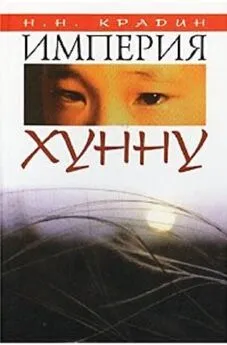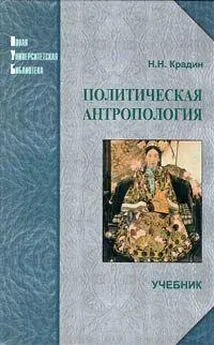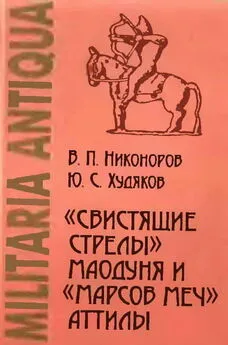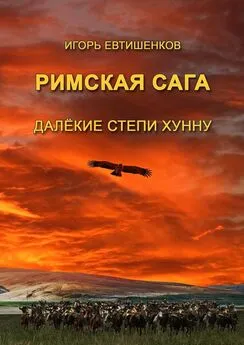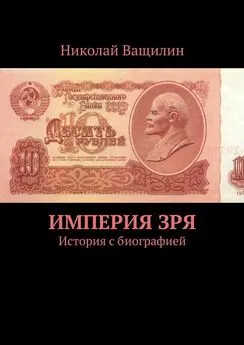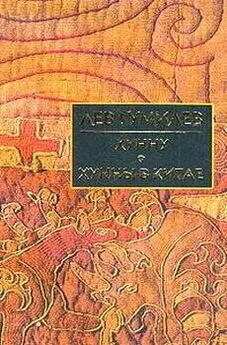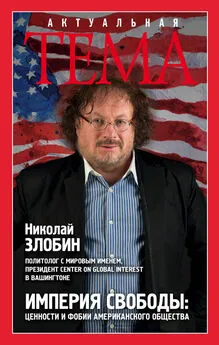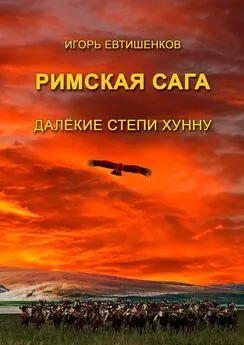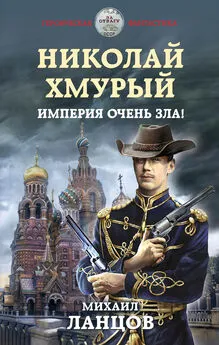Николой Крадин - Империя Хунну
- Название:Империя Хунну
- Автор:
- Жанр:
- Издательство:Логос
- Год:2001
- Город:Москва
- ISBN:5-94010-124-0
- Рейтинг:
- Избранное:Добавить в избранное
-
Отзывы:
-
Ваша оценка:
Николой Крадин - Империя Хунну краткое содержание
Книга предназначена для историков, археологов и этнологов-антропологов. Благодаря ясному языку и увлекательному стилю изложения она привлечет внимание широких кругов читателей, а также всех, интересующихся историей древних цивилизаций.
Империя Хунну - читать онлайн бесплатно полную версию (весь текст целиком)
Интервал:
Закладка:
In the written sources, there is no information concerning the different categories of poor persons and persons not processing full right who have been engaged in cattle-breeding in the Hsiung-nu society. It is alto, unknown how were spread the slave-owning relations among the Hsiung-nu although the sources are gay with the data of a stealing by nomads of farmers. A lack of development of a slavery in the Hsiung-nu society can be explained by the cross-cultural anthropological studies which clearly demonstrate than in none of the pastoral societies, a slavery has not be widely spread [for details see Нибур 1907: 237–265; Хазанов 1975: 133–148; Khazanov 1984/1994: 160–161; Крадин 1992: 100–111 etc.]. Those researchers are most likely right [Гумилев 1960:147; Давыдова 1975: 145; Rudenko 1969; Хазанов 1975: 143–144], who believe that the overwhelming majority of prisoners of war in the Hsiung-nu societies has been engaged in agricultural and handicraft in the specially established settlements. However, as to social-economic and legal position, the majority of these persons (many of these people were free deserters) have been no slavers. Their social status has been most likely unequal: from the conditional 'vassalage' to some similarity of serfdom. The Ivolginskoye fortes settlement near the city Ulan-Ude in Buryaita was a classical settlement of such type [Davydova 1968; Давыдова 1985; 1995; 1996; Hayashi 1984 etc.].
The archaeological data supplement to a great extent an information of writes annals. Even before a formation of the nomadic empire the social stratification traced on the archaeological data, has existed in the Hsiung-nu society. At the foot of the society, the ordinary burial places of ordinary nomads are. Above, there are graves of the representatives of the tribal ruling clique in which a great quantity of adornments for chariots, rare arms, jewelry and plates with highly artistic images of animals of gold, rods, pommes of banners etc. (burial ground of Aluchzaiden and Hsugoupan in the Inner Mongolia in China [Тянь Гуацзинь, Го Сусинь 1980; 1980а]).
During a period of the Hsiung-nu prosperity, a social stratification has further increased. The higher a status of individual the greater are expenses for erection of the funeral structure and the more splendid are things lowered in a grave. In the picturesque taiga Hentay, Mongolia, the world-famous Noin-Ula burial places were discovered and in the Ilmovaya pad in the Southern Buryatia, the monumental 'royal' and 'princely» mound graves of the Hsiung-nu elite are located for building of which considerable efforts were required [Unehara 1960; Rudenko 1969; Коновалов 1976]. The burials of ordinary nomads were much simpler and more poor in this. These are generally rounded or quadrangular stone burial mounds of 5–10 m in diameter. A depth of the grave hole was generally 2–3 m. At the bottom of a hole, a wooden coffin (more rarely a coffin within a framework) has stood. The burial place has been accompanied by individual goods of households, arms, harness, implements, adornments and funeral food [Доржсурэн 1961; Коновалов 1976; Цэвендорж 1985 etc.]. The graves of settled people living on the territory of Ivolginsky fort were even simpler and more poor [Davydova 1968; Давыдова 1995; 1996]. It demonstrates the complicated multilayer social structure of the Hsiung-nu society [in details see Крадин 1999: 405-67, 471, 476-94].
The Shan-уй has been at the head of the Hsiung-nu society. In the official documents of the prosperity period of the Hsiung-nu empire, the Shan-yii has been named as "born by the heaven and earth, raised by the sun and moon, great Shan-yii of Hsiung-nu [Лидай 1958: 30]. His power of the rulers of other steppe empires of Eurasia has been based on external rather than internal sources. Shan-yii has used the raids to obtain political support on the side of tribes — members on the 'imperial confederation'. Furthermore, using the threats of raids, he has extorted from the Han empire the 'gifts' (for distribution among relatives, chiefs of tribes, and armed force) and the right for trade with the Chinese in the legions adjacent to a border (for all citizens). As to internal affairs Shan-yii had much lesser authorities. The majority of political decisions at a local level have been made by the tribal chiefs.
The American anthropologist Thomas Barfield assumes that it is possibly the Han politicians have relied on a simple human avidity and hoped that Shan-yii will make dizzy from the quantity and diversity of rare wonders and will store Up them in his depository for envy of subjects or squander them for extravagant behavior. However, the Chinese intellectuals — scribes did not understand the principles of the power of the steppe ruler. A psychology of a nomad is distinguished from that of a farmer and town-dwellers. The status of the ruler Of nomadic empire depended on the one hand, on the opportunity to provide his subjects with gifts and material wealth and on military might of the power, on the other hand, to make raids and extort 'gifts'. Therefore, a necessity to support a stability of the military-political structure rather than a personal avidity (as the Chinese believed erroneously) was a reason of permanent demands of the Shan-уй to increase presents. The largest insult which could be deserved by the steppe ruler was accusation of stinginess. Thus, spoils of war, gifts of the Han emperors and international trade were main sources of the political power in the steppe. Consequently, the 'gifts' flowing through their hands not only did not weaken and, on the contrary, strengthened the power and influence of the ruler in the 'imperial confederation' [Barfield 1992: 36–60].
In the eyes of Chinese historians, the Hsiung-nu empire has presented the expansionistic state with the autocratic power. However, in fact, the Hsiung-nu society has been a quite fragile mechanism. Even during periods of the highest prosperity of the Hsiung-nu polity (under Мао-tun and his nearest successor), the military-hierarchical system has only co-existed and supplement the complicated genealogical hierarchy of tribes but never changed it finally. In theory, Shan-уй could demand from subjects implicit obedience and issue any orders but, in fact, his political might was limited. First, the supertribal power has remained in the Hsiung-nu empire because of that (a) membership in the confederation provided for tribes political independence from neighbours and a number of other significant advantages, (b) Shan-уй and his encirclement guaranteed for tribes a particular inner autonomy within the empire. Secondly, an actual power of the tribal chiefs and elders was autonomous from the policy of the centre. Before the tribes dissatisfied by the policy of the 'metropolis' of empire, the undesirable for the centre alternative of the decampment to the west or flight to the south under the patronage of Chine has always occurred.
The eminent Chinese historian Ssu-ma Ch'en has given a detailed description of the administrative system of the Hsiung-nu empire [Лидай 1958: 17; see also de Groot 1921: 55; Watson 1961a: 163–164; Материалы 1968:40]. The empire under Мао-tun was divided into three parts: centre, left and right wings. The wings, in turn, were divided into underwings. The whole supreme power was concentrated in hands of Shan-yii. Concurrently, he was in charge of the centre — tribes of the 'metropolis' of the steppe empire. 24 highest officials who were in charge of large tribal associations and had at the same time military ranks of 'chief of a ten thousand' were subordinate to Shan-yu. In charge of the left wing, the elder brother — successor of the throne — was. There nearest relatives of the ruler of steppe empire were his cornier, leader and cornier of the right wing. Only they had the highest titles of 'kings' (wang in Chinese). 'Kings' and some more six most moble 'chiefs of a ten thousand' have been considered to be 'strong' and were in command of not less than ten thousand riders. The rest of 'chiefs of a ten thousand' were infact command of less than ten thousand cavalrymen [Лвдай 1958: 17; Watson 1961a: 163–164 etc.].
At the lowest level of the administrative hierarchy, local tribal chiefs and elders have been. Officially, they have submitted to 24 deputies from centre. However, intact, a dependence of tribal leaders was limited. The headquarters was far apart and local chiefs have enjoyed support of related tribal groups. Thus, an influence of the imperial deputies on local authorities was, to a certain extent, limited and they were forced to take into account the interests of subordinate to them tribes. Total quantity of these tribal groups within the Hsiung-nu imperial confederation is unknown.
The use by the Chinese historian of military ('chiefs of a ten thousand', 'chiefs of a thousand', 'chiefs of a ten hundred') as well as traditional ('kings'= wang, 'princes' of different rank, 'chief commandants', 'household administrators', chii-ch 'u officials etc.) terms gives grounds to propose that the systems of military and civil hierarchy have in Parallel existed. Each of them had different functions. The system of non-decimal ranks has been used during wars when a great quantity of warriors from different parts of steppe have joined into one or several armies [Barfield 1992: 381.
The power of Shan-yii, highest commanders and tribal chiefs at local places has been supported by strict but simple traditional ways. At a whole, as the Hsiung-nu laws were estimated by the Chinese chronicles, the Hsiung-nu's punishment were 'simple and easily realizable' and were mainly reduced to strokes of the can, exile and death penalty. It provided an opportunity to quickly resolve the conflict situations at different levels of the hierarchical pyramid and to maintain a stability of the political system as a whole. It is no mere chance that for the Chinese accustomed from childhood to unwieldy and clumsy bureaucratic machine, the management system of the Hsiung-nu confederation seemed to be extremely simple: "management of the whole state is similar to that of one's body' [Лвдай 1958: 17].
A well-balanced system of ranks developed under Мао-tun has not remained later on. The Chinese historian Fan Yeh has given the same detailed description of the Hsiung-nu's political system in I AD as his eminent predecessor Ssu-ma Ch'ien [Лвдай 1958: 680; Материалы 1973: 73]. It provides an unique opportunity to observe a dynamics of the political institutions of the Hsiung-nu throughout 250 years. The most considerable differences between the power of Мао-tun epoch and Hsiung-nu society before collapses are as follows: (1) There has been a transition, from the tribe, military-administrative division to dual tribal division into wings; (2) Ssu-ma Ch'ien wrote about clearly development military-administrative structure with 'chiefs of a ten thousand'. Fan Yeh does not mention a 'decimal; system and instead of military rank of 'chiefs of a ten thousand', the civil titles of 'kings' (wang) are enumerated; (3) According to Fan Yeh, the whole first ten of so called 'strong' 'chiefs of a ten thousand' that shows, from the viewpoint of the Chinese chronicles. Their more independent position on the side of the Shan-уй headquarters; (4) In the Hsiung-nu empire, an order of succession to the throne has changed. If ordinally the throne of Shan-уй has been passed from the father to the son (except several extraordinary cases), them other order has become to predominate: from uncle to nephew; (5) In the Hsiung-nu society, a principle of join government has prevailed according to which the ruler of the nomadic empire has a cornier controlling a junior by rank 'wing'. A capacity of junior co-ruler is in herited within his lineage but his successors can not pretend on this Shan-уй 's throne.
Читать дальшеИнтервал:
Закладка:
